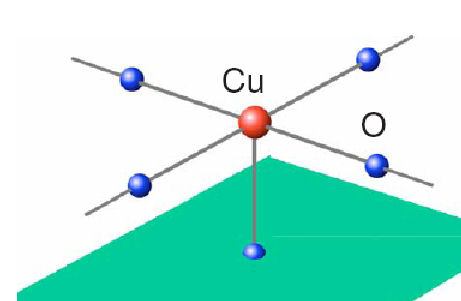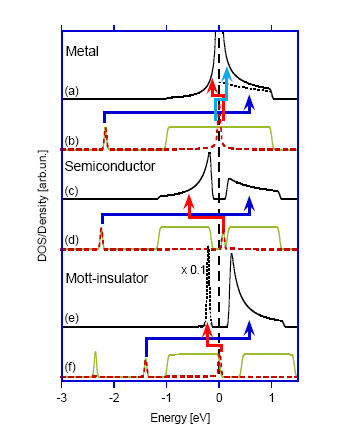| Highlights |
|
Effective operator for dd transition in nonresonant inelastic x-ray scattering M. van Veenendaal and M. Haverkort Phys. Rev. B. 77, 224107 (2008) Recent experiments by Larson et al. demonstrate the feasibility of measuring local d–d excitations using nonresonant inelastic x-ray scattering (IXS). We establish a general framework for the interpretation where the d–d transitions created in the scattering process are expressed in effective one-particle operators that follow a simple selection rule. The different operators can be selectively |
|
Anomalous ground states at the interface between two transition-metal compounds M. van Veenendaal Phys. Rev. B 78, 165415 (2008) The effects of strong covalency across a strongly correlated interface between two transition-metal compounds are studied. Since the charge transfer is directional, the lowest electron-removal and -addition states are often not involved in the formation of covalent bonds across the interface. This paper shows that this can lead to the formation of unusual ground states not found in the bulk. For cuprates, the formation of “Zhang-Rice triplets” is observed. For nickelates, we demonstrate the possibility of in-plane or out-of-plane orbital switching, whereas cobaltates are prone to spin switching. For Co and Fe compounds, a change between antiferromagnetic superexchange and ferromagnetic double exchange is found. Calculations of x-ray magnetic dichroism are presented, which could provide insight into the presence of these unusual ground states. |
|
Dynamics and Spectral Weights of Shake-up Valence Excitations in Resonant Inelastic X-ray Scattering K. H. Ahn, A. J. Fedro, and Michel van Veenendaal Phys. Rev. B. 79, 045103 (2009) We discuss the trends in the creation of valence excitations resulting from the screening of the core hole in resonant inelastic x-ray scattering (RIXS) for metals, semiconductors, and strongly correlated systems. We find that the inelastic spectral weight is not determined by the total energy of the shake-up structure, as is expected from simple considerations, but by the excitonic nature of the core hole and the valence electrons. The asymmetry between electron and hole excitations is emphasized and shown to be important in explaining the RIXS spectrum at, e.g., transition-metal K edges. |



